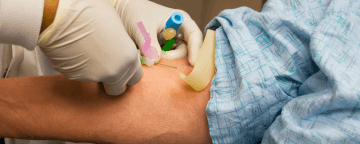Emma Yasinsky in The Scientist:
 One day, doctors may be able to use the metabolites in blood samples to predict the likelihood of a person surviving another five to 10 years, according to a newly developed tool described today (August 20) in Nature Communications. The authors of the report say the information may be useful in helping decide whether or not to do surgery on patients who are frail or could serve as endpoints in new clinical trials. The study “shows the potential usefulness of metabolomic biomarkers,” says Paola Sebastiani, a biostatistician at Boston University who was not involved in the study. She adds that the field will need longitudinal studies in the future to assess the biomarkers’ clinical usefulness. The team’s goal was to find blood-based biomarkers that can “indicate risk of vulnerability, especially if that information provides opportunities for an improvement in lifestyle or better treatment,” says Eline Slagboom, a molecular epidemiologist at Leiden University and the senior author on the study.
One day, doctors may be able to use the metabolites in blood samples to predict the likelihood of a person surviving another five to 10 years, according to a newly developed tool described today (August 20) in Nature Communications. The authors of the report say the information may be useful in helping decide whether or not to do surgery on patients who are frail or could serve as endpoints in new clinical trials. The study “shows the potential usefulness of metabolomic biomarkers,” says Paola Sebastiani, a biostatistician at Boston University who was not involved in the study. She adds that the field will need longitudinal studies in the future to assess the biomarkers’ clinical usefulness. The team’s goal was to find blood-based biomarkers that can “indicate risk of vulnerability, especially if that information provides opportunities for an improvement in lifestyle or better treatment,” says Eline Slagboom, a molecular epidemiologist at Leiden University and the senior author on the study.
Doctors often use functionality measures such as grip strength and gait to determine an elderly patient’s health status, but these measures are imprecise. Other traditional biomarkers don’t necessarily apply to patients who hit a certain age. “For example, a somewhat higher weight, blood pressure, or cholesterol level is not as bad for individuals over 80 years of age as compared to younger individuals,” says Slagboom. So her group undertook the largest study of its kind to detect blood-based biomarkers of metabolism. “We have worked with biobanks from all over the world for three years to come to these results.” The team used data from 12 cohorts of individuals of European descent, a total of 44,168 people aged 18–109, to identify 14 metabolites that they could use to develop a “score” to evaluate a person’s risk for mortality at five and 10 years out. During the study’s follow up, which ranged from around three years to nearly 17, depending on the cohort, 5,512 of the participants died.
More here.
